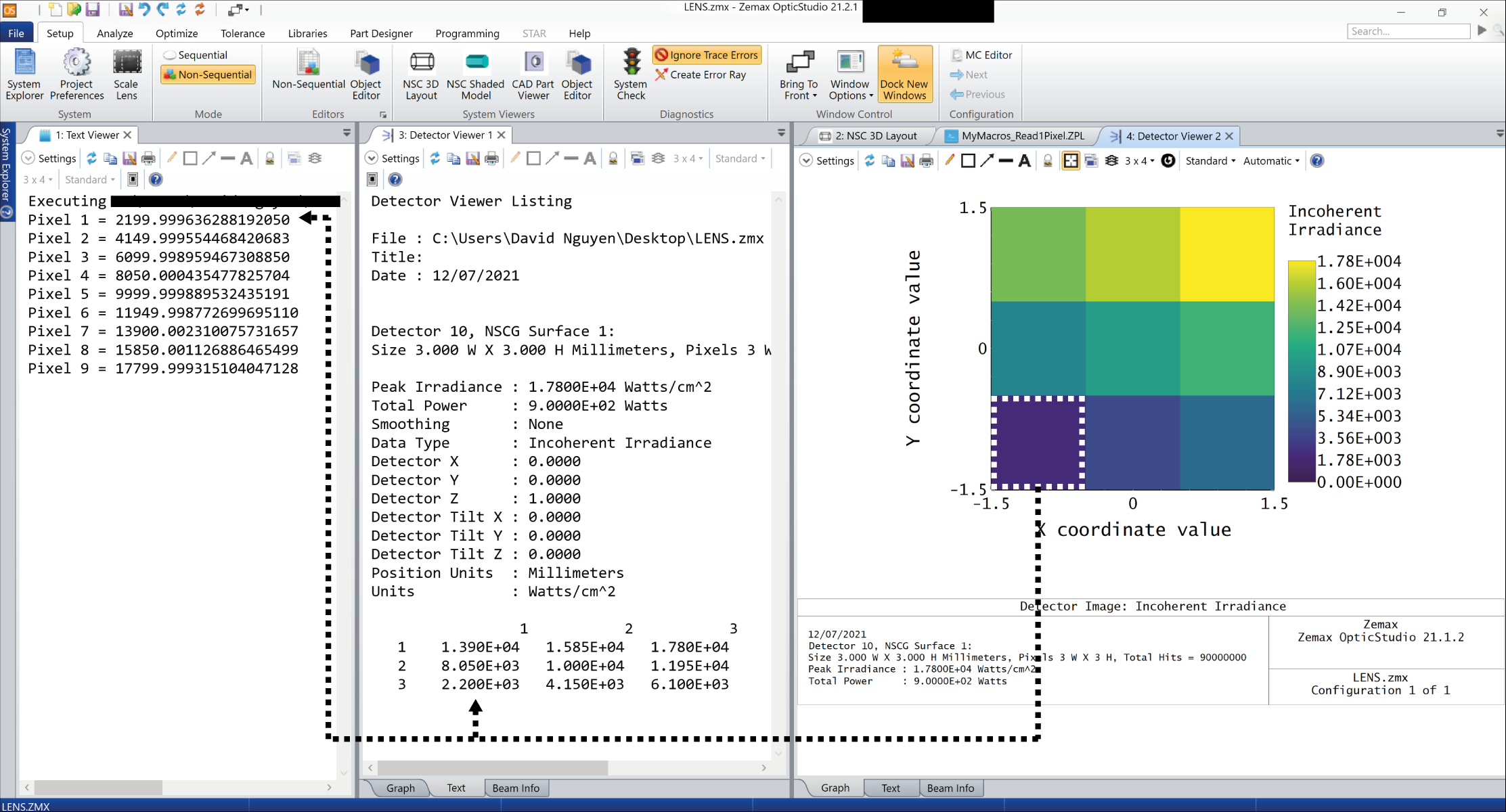Hi Pascal,
This was more complicated than I thought, but this should help you.
The macro I used is the following:
# Clear all detectors
clear = NSDD(0, 0, 0, 0)
# Number of the non-sequential surface (1 = purely non-sequential system)
surface = 1
# Sources to trace (0 = all)
source = 0
# Raytrace parameters
split_rays = 0
scatter_rays = 0
use_polar = 0
ignore_errors = 1
# Random seed (0 = random number)
random_seed = 0
# Run a raytrace (without saving to a file)
NSTR surface, source, split_rays, scatter_rays, use_polar, ignore_errors, random_seed
# Specify detector to read from
detector = 10
# Data to read (1 = flux/area)
data = 1
# Read all pixels individually
pixel_value1 = NSDD(surface, detector, 1, data)
pixel_value2 = NSDD(surface, detector, 2, data)
pixel_value3 = NSDD(surface, detector, 3, data)
pixel_value4 = NSDD(surface, detector, 4, data)
pixel_value5 = NSDD(surface, detector, 5, data)
pixel_value6 = NSDD(surface, detector, 6, data)
pixel_value7 = NSDD(surface, detector, 7, data)
pixel_value8 = NSDD(surface, detector, 8, data)
pixel_value9 = NSDD(surface, detector, 9, data)
# Print pixels value
FORMAT 1.15
PRINT 'Pixel 1 = ', pixel_value1
PRINT 'Pixel 2 = ', pixel_value2
PRINT 'Pixel 3 = ', pixel_value3
PRINT 'Pixel 4 = ', pixel_value4
PRINT 'Pixel 5 = ', pixel_value5
PRINT 'Pixel 6 = ', pixel_value6
PRINT 'Pixel 7 = ', pixel_value7
PRINT 'Pixel 8 = ', pixel_value8
PRINT 'Pixel 9 = ', pixel_value9
Hopefully, it is self explanatory except for the pixel numbering part. The pixel numbering is what got me confused at first, but here is what I obtained (you can also download my file, which has the macro in it, and check for yourself):

As you can see, pixel 1 is the bottom left corner, and pixel 2 is the next one to the right, etc.
Let me know if that makes sense. I let you do the math for the 6th pixel of the 5th row, which is different depending on the origin. Note that the indexing starts at 1. You probably need something like 5 times the row length + 6 or similar.
At this point, I would strongly suggest to look into the ZOS-API, particularly if you are doing any sort of post-processing with Python or MATLAB, or even C++/C#.
I hope this helps.
Take care,
David




